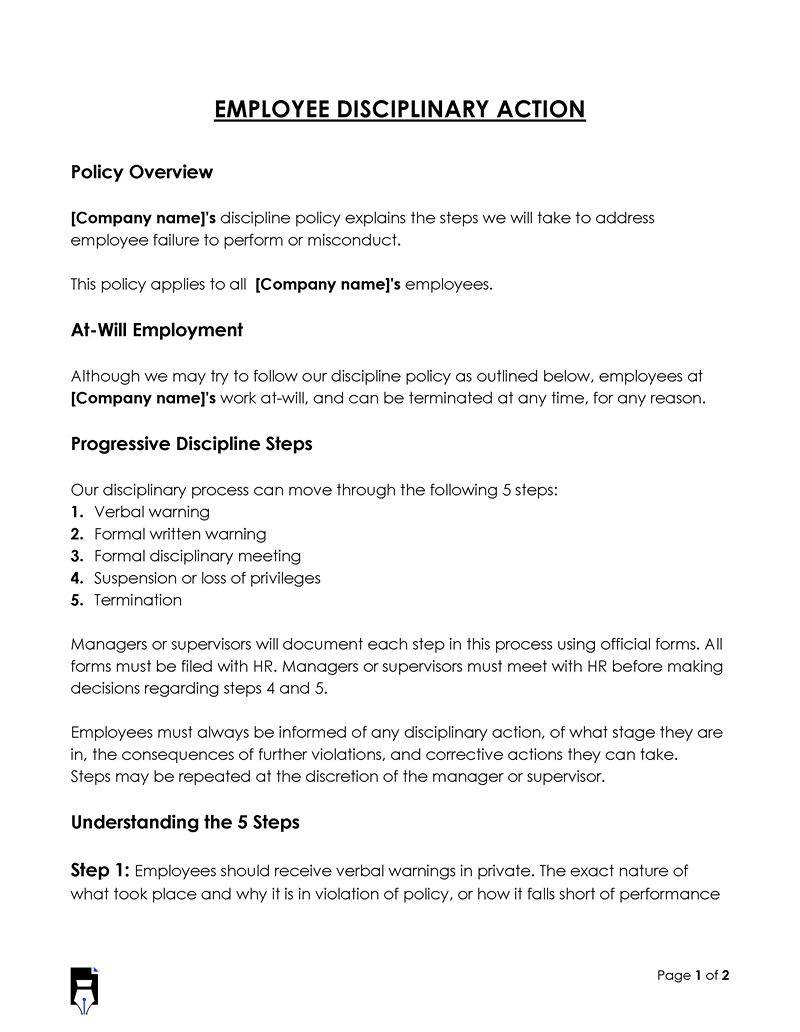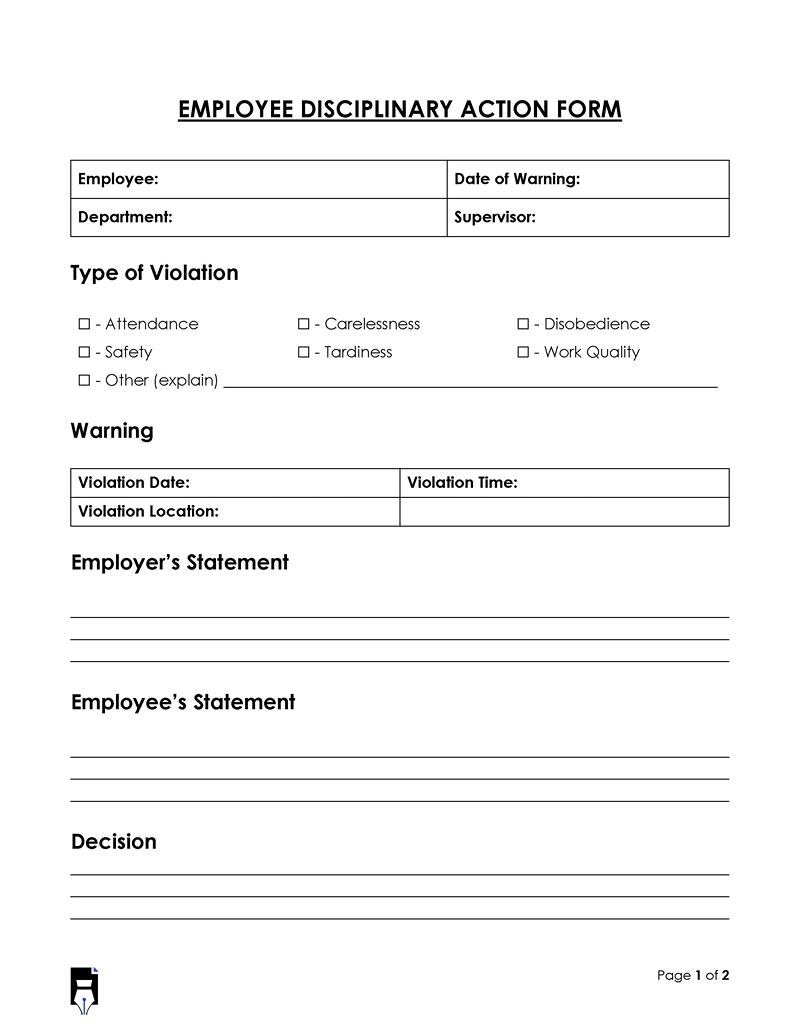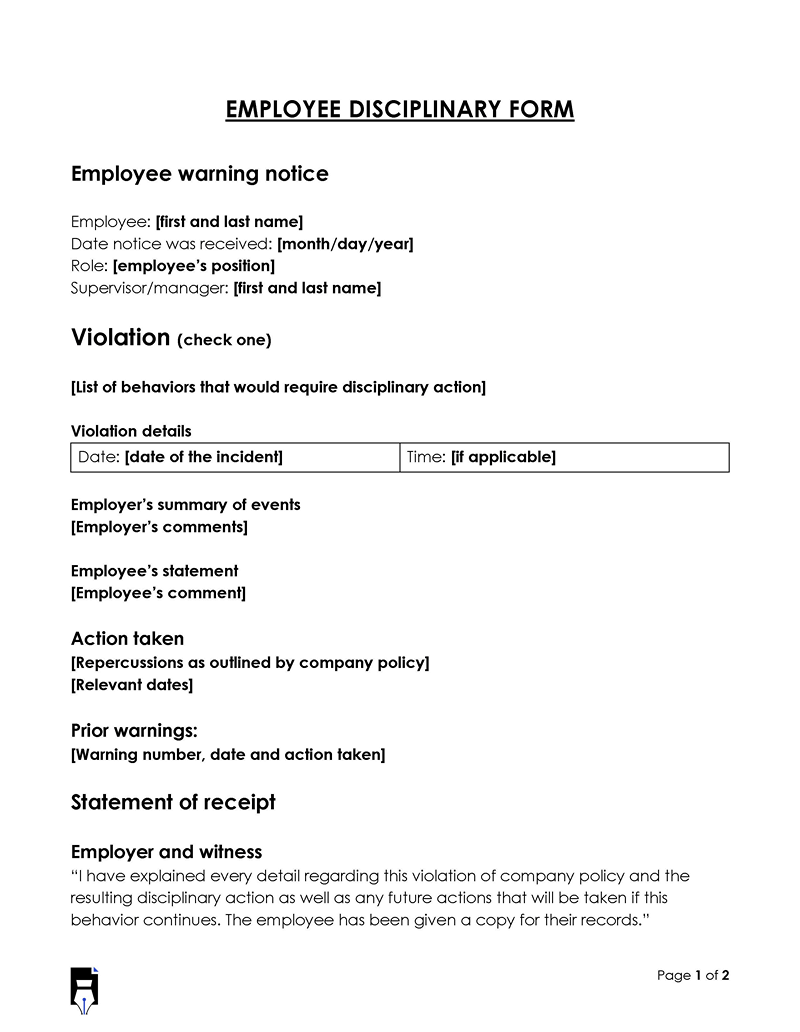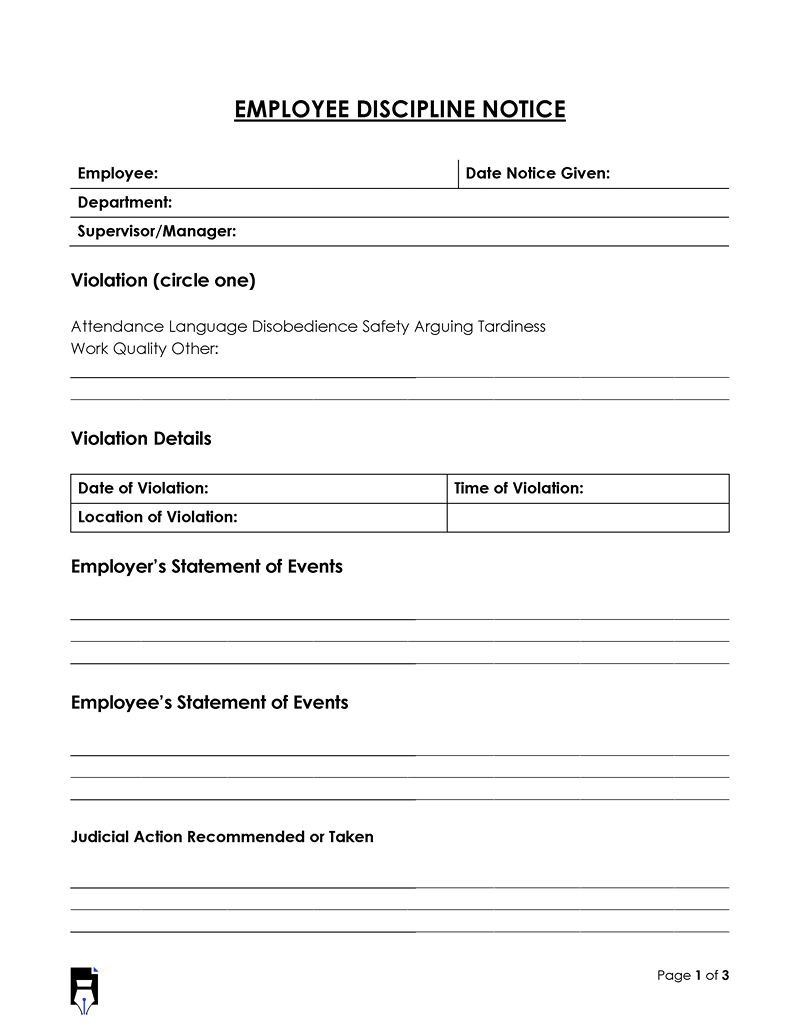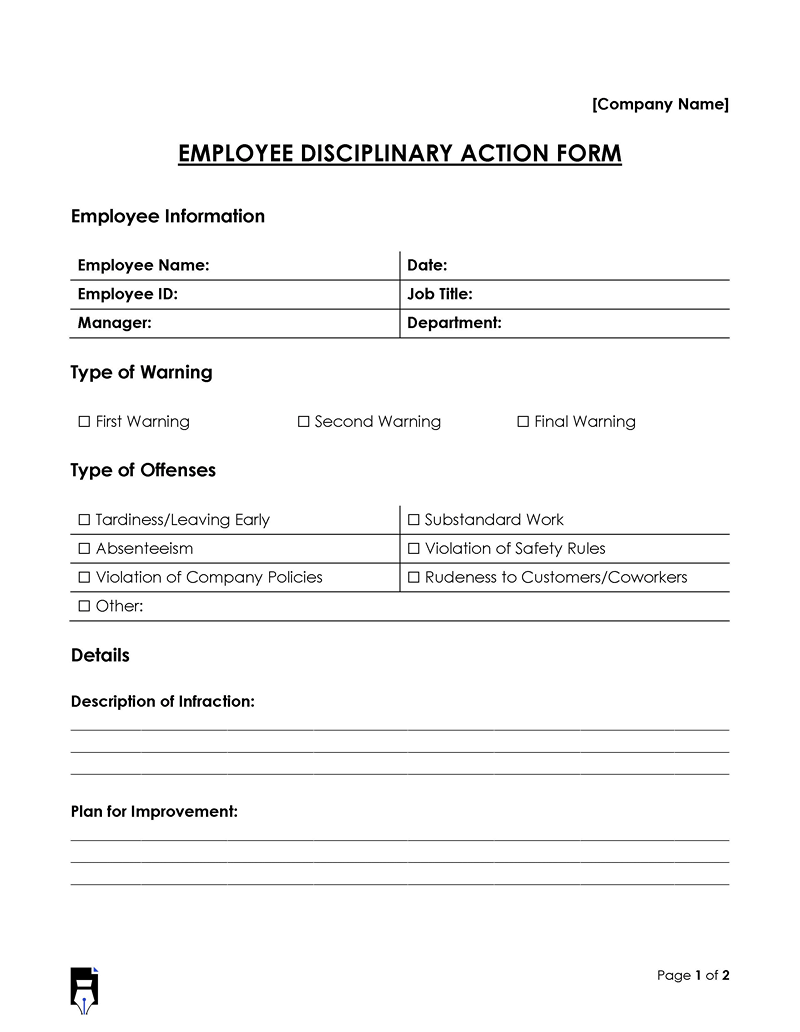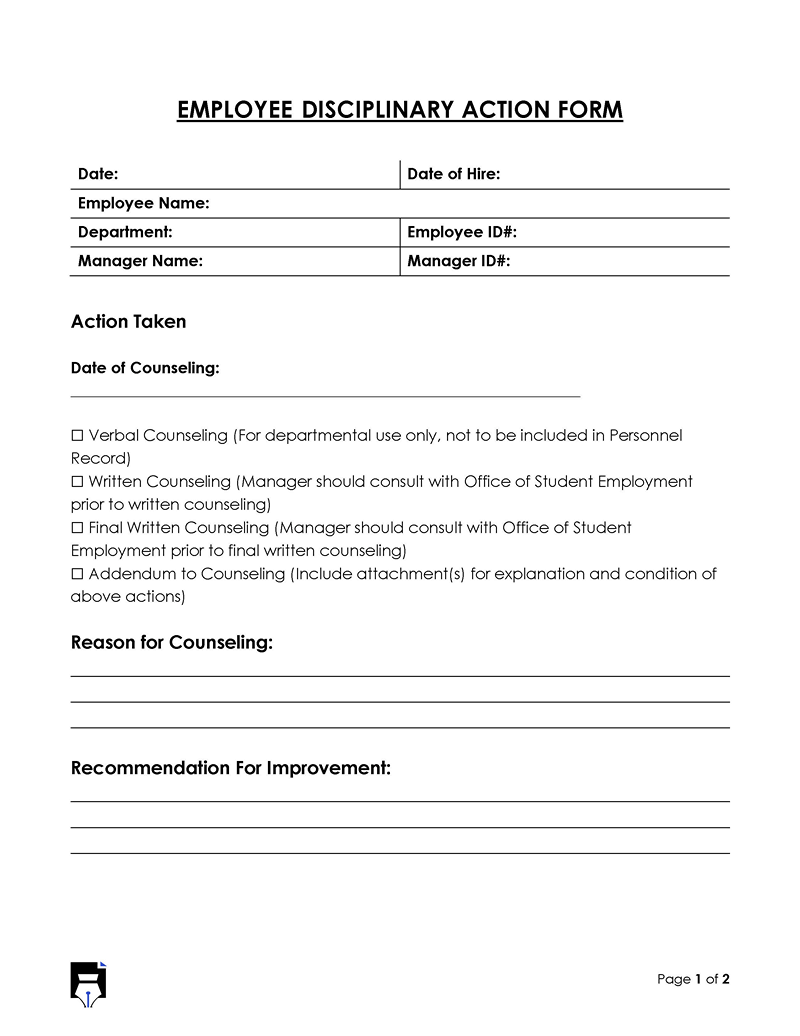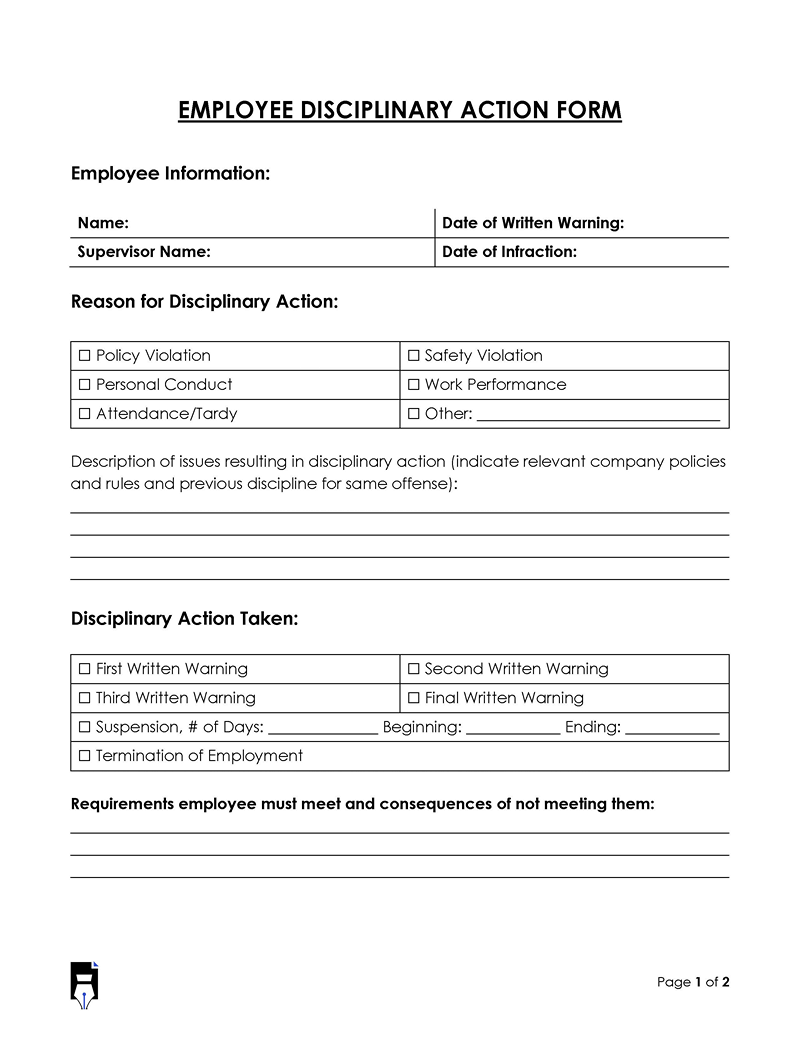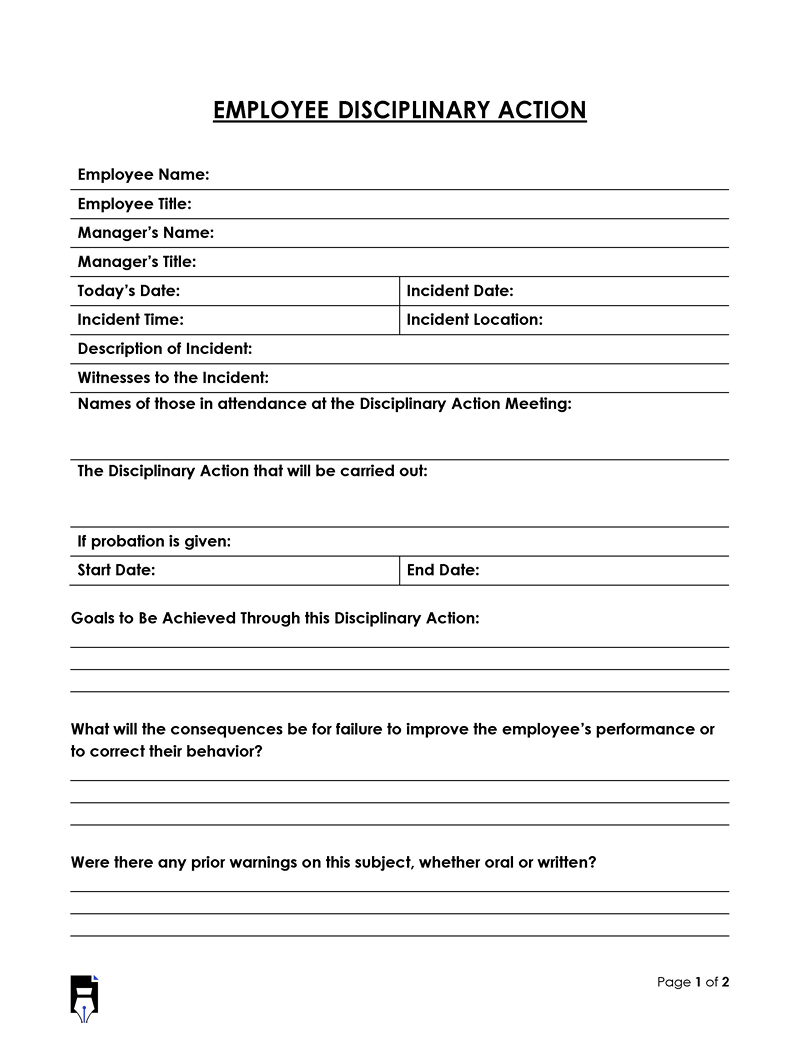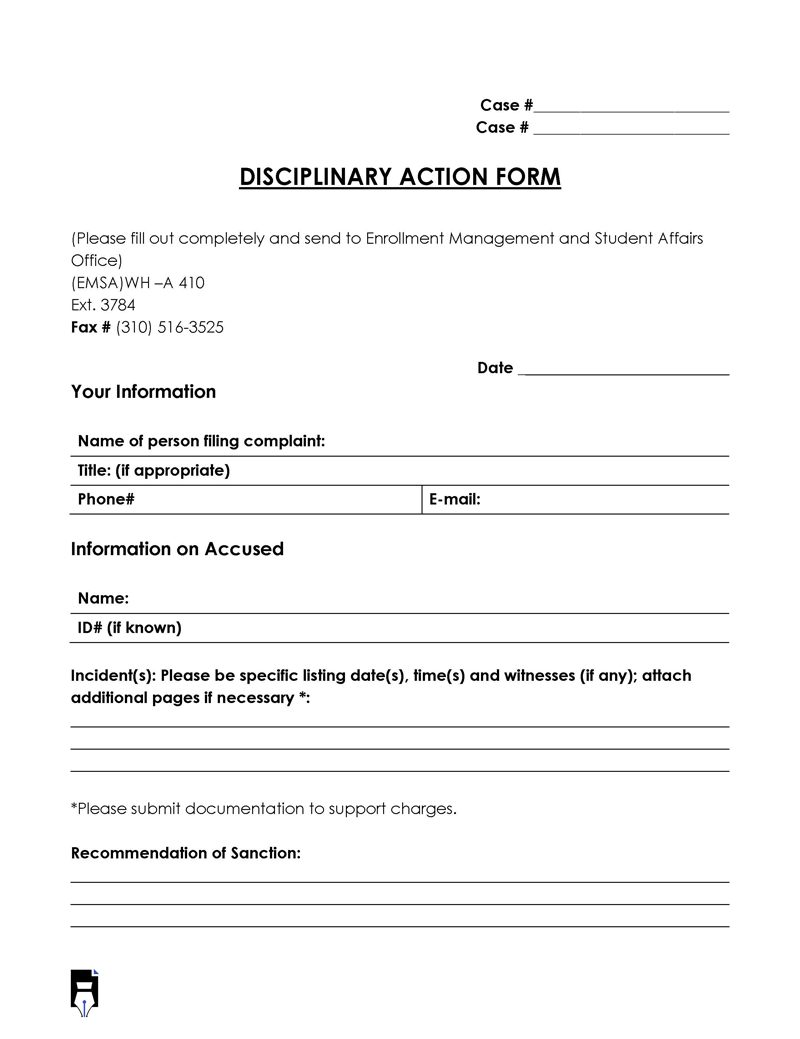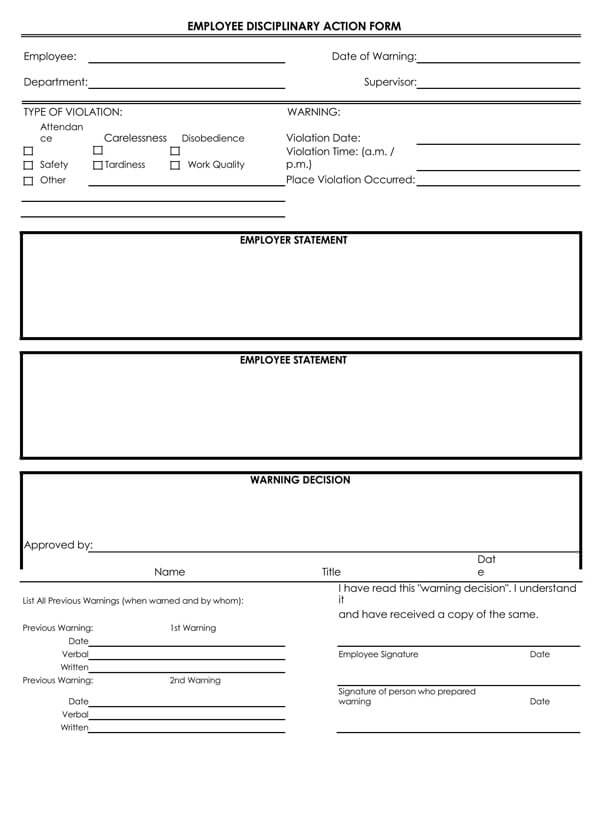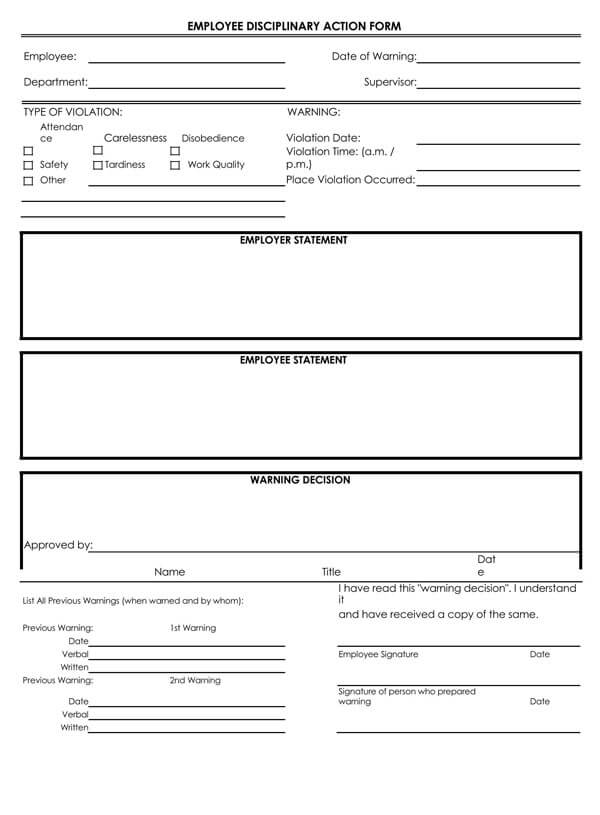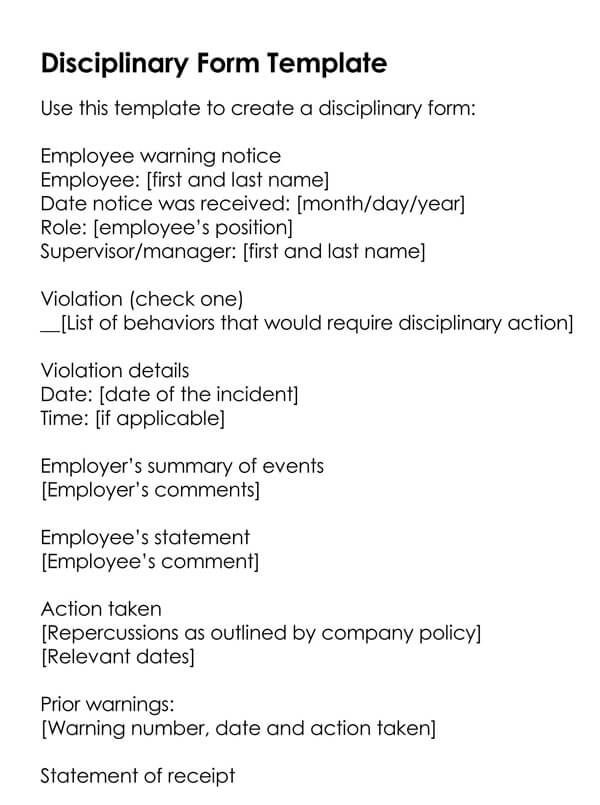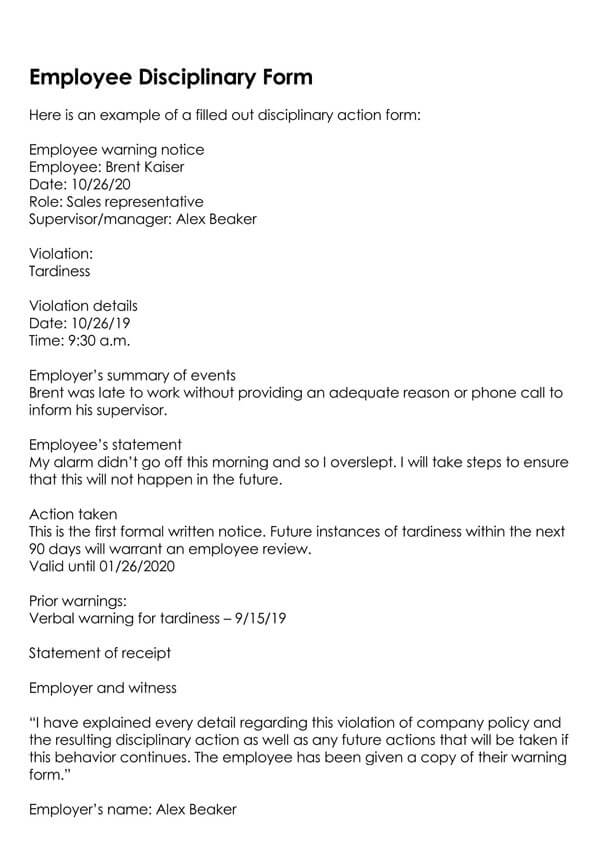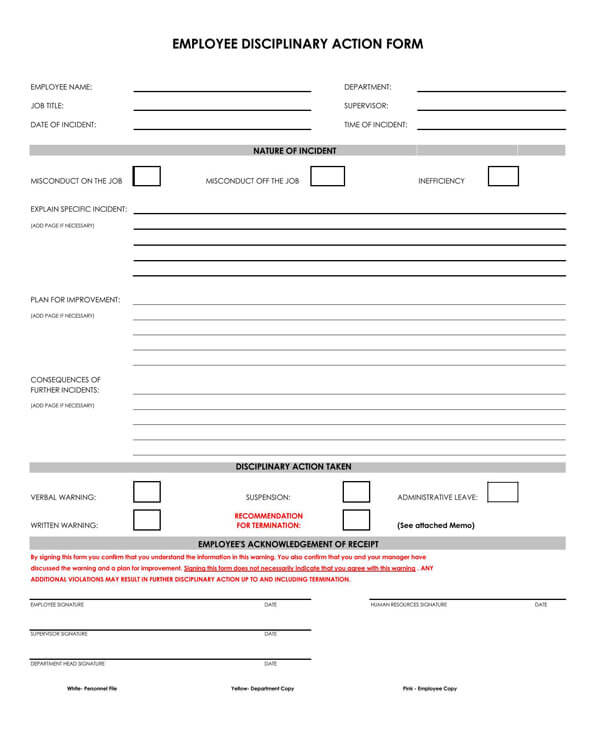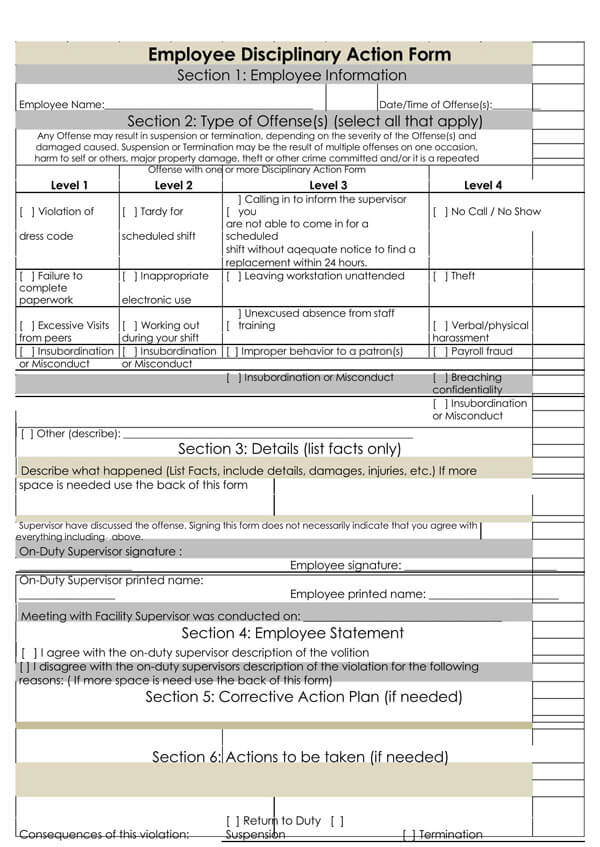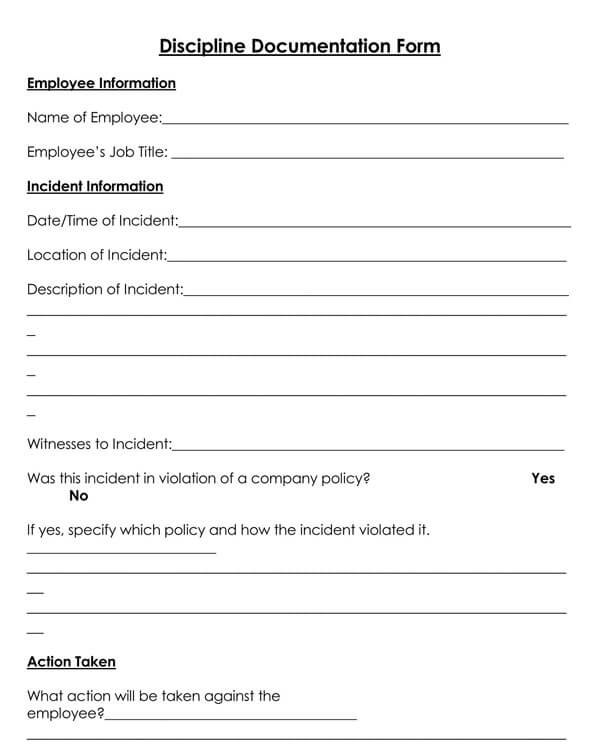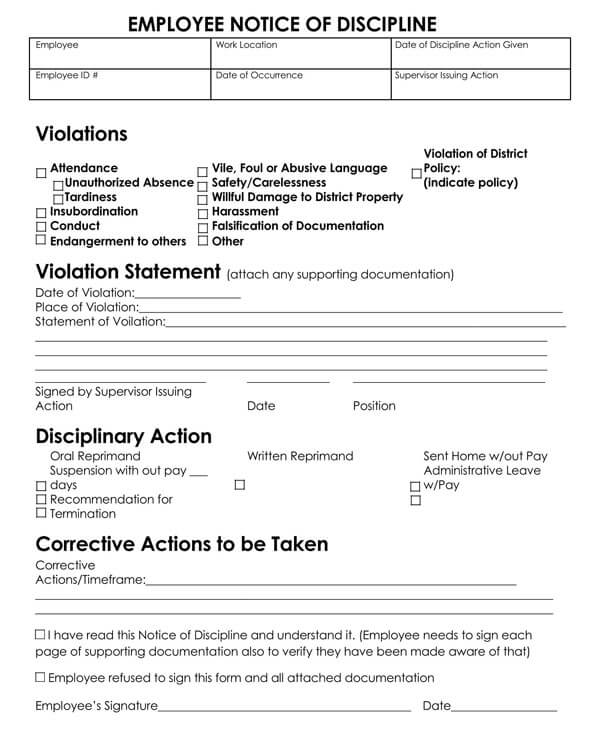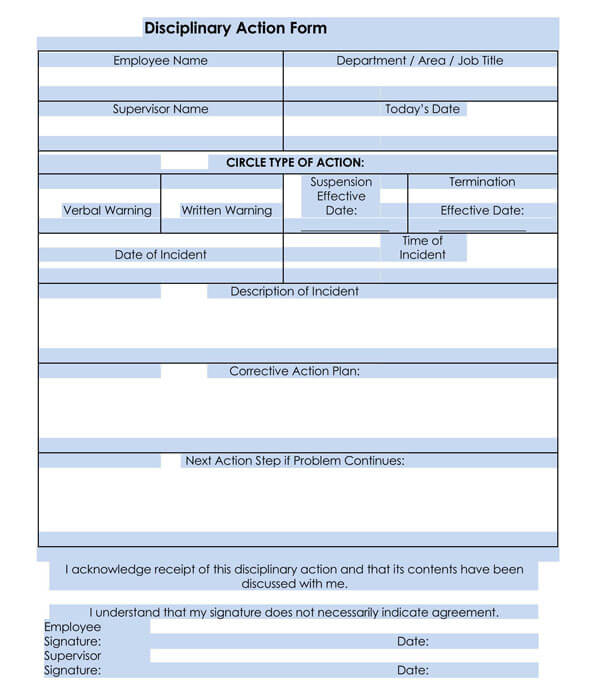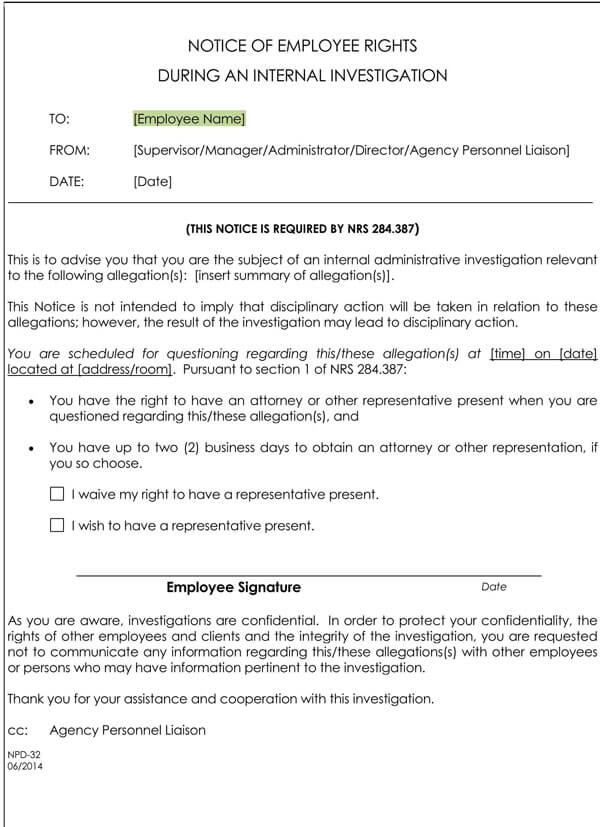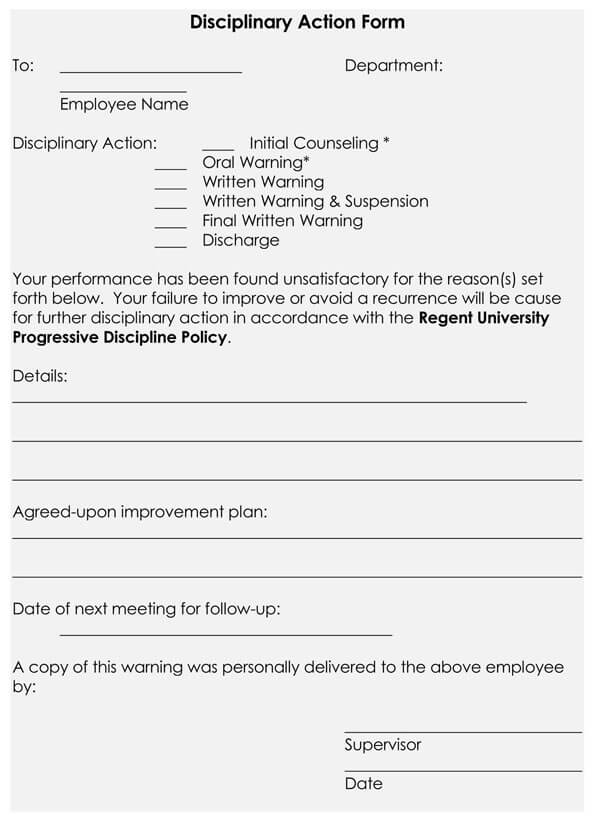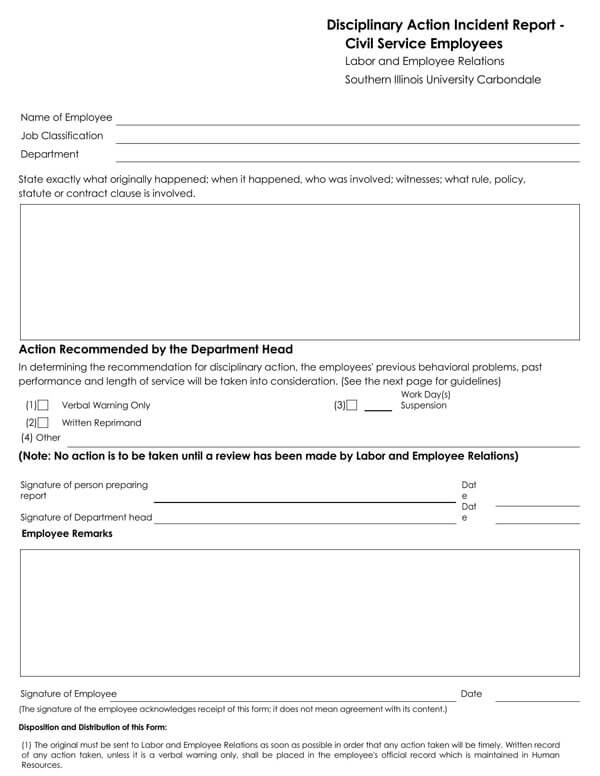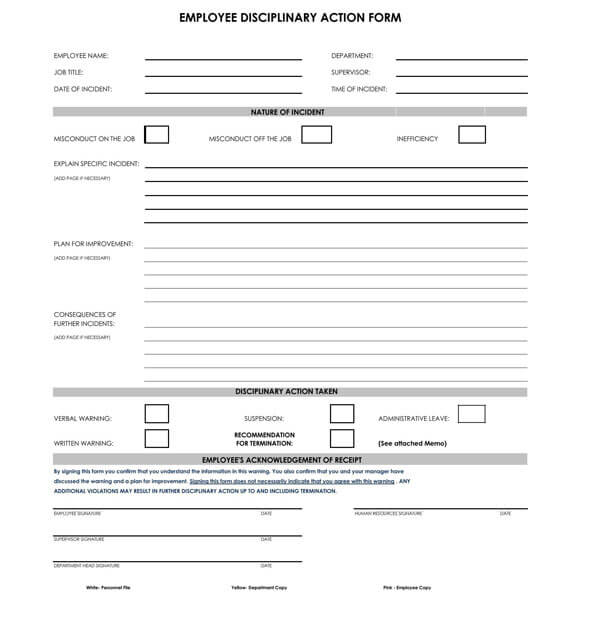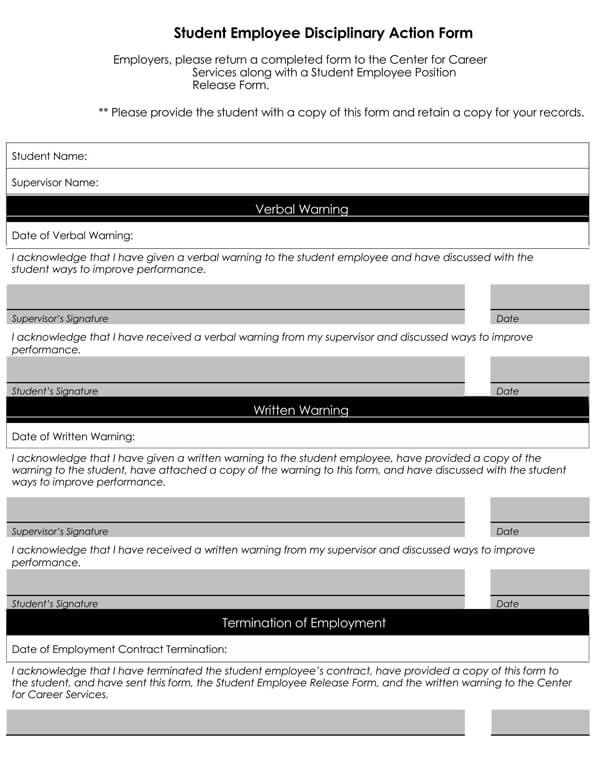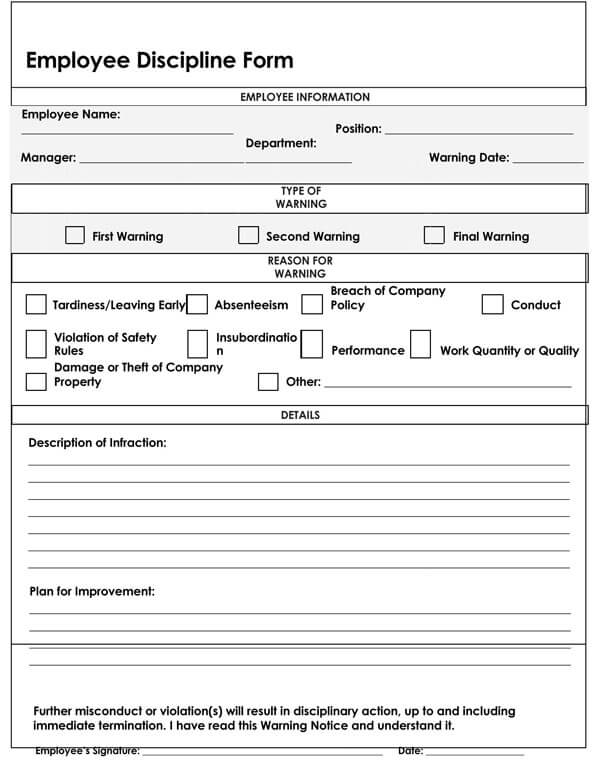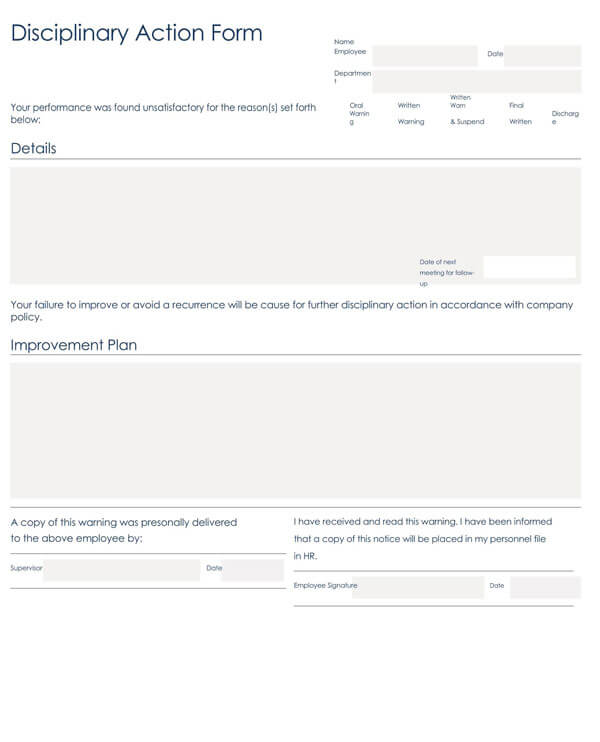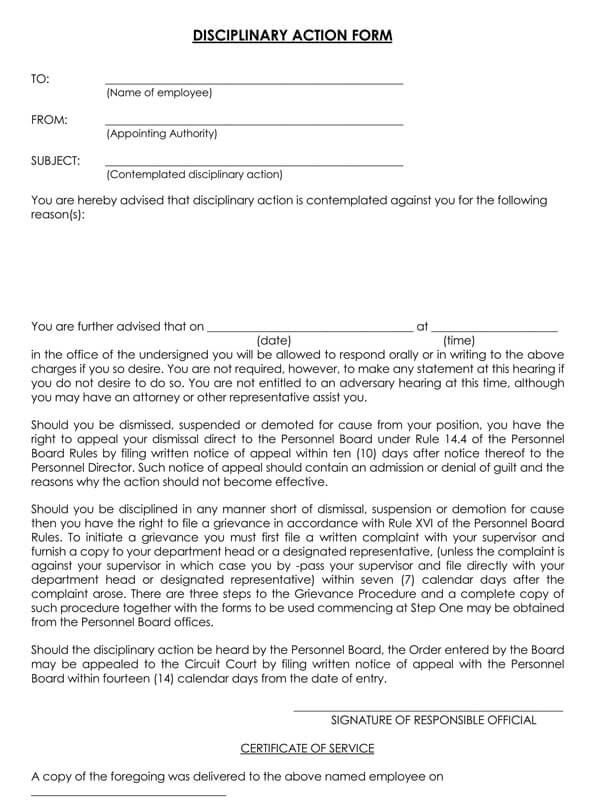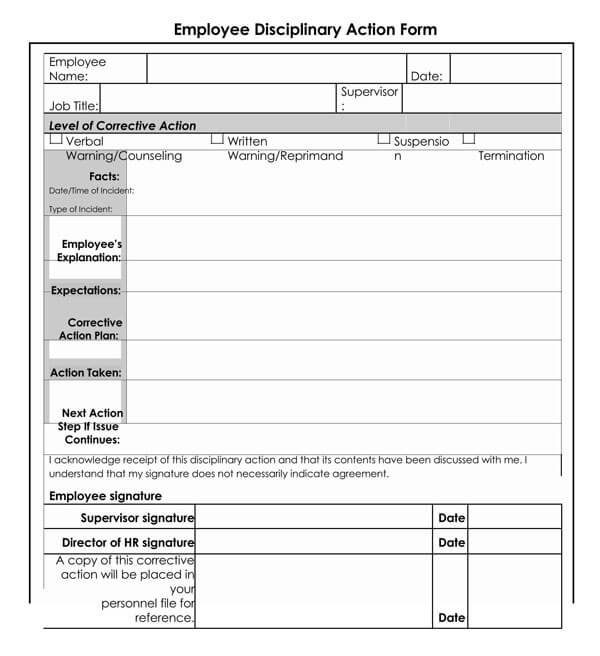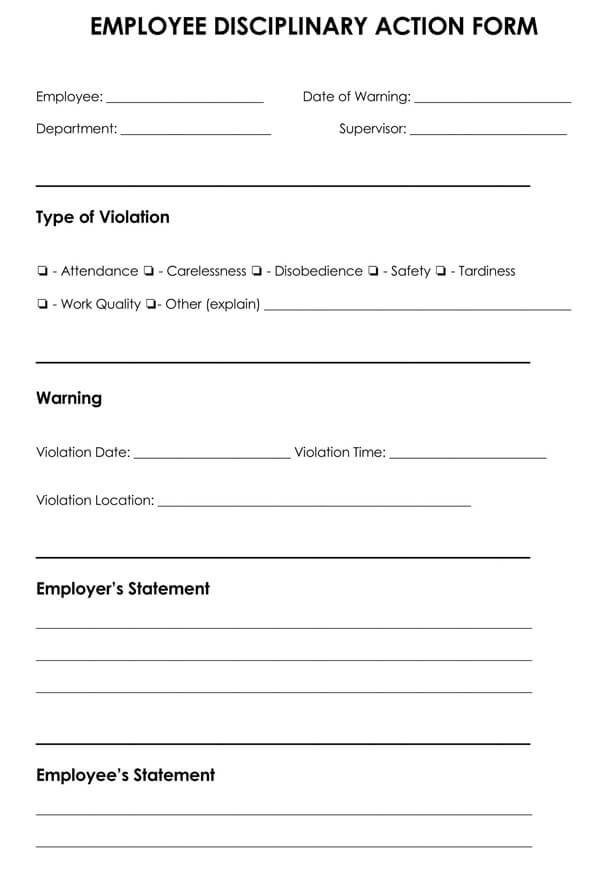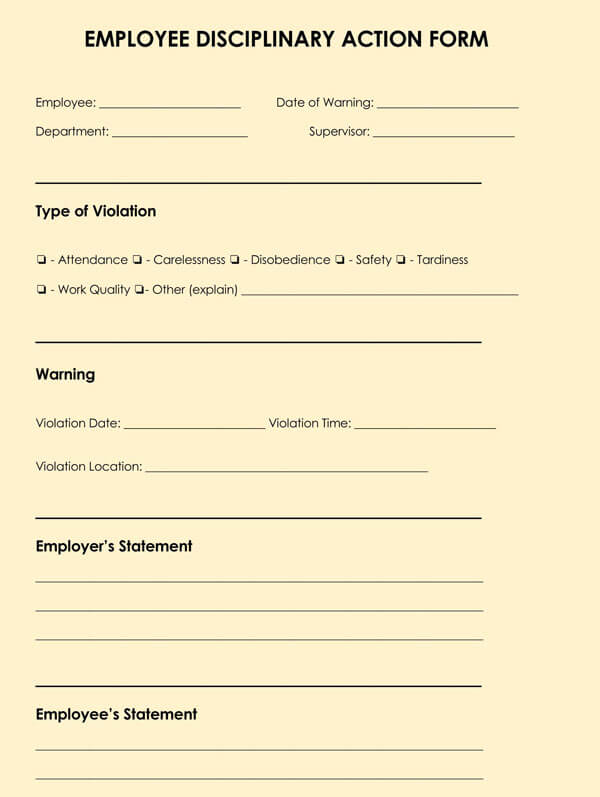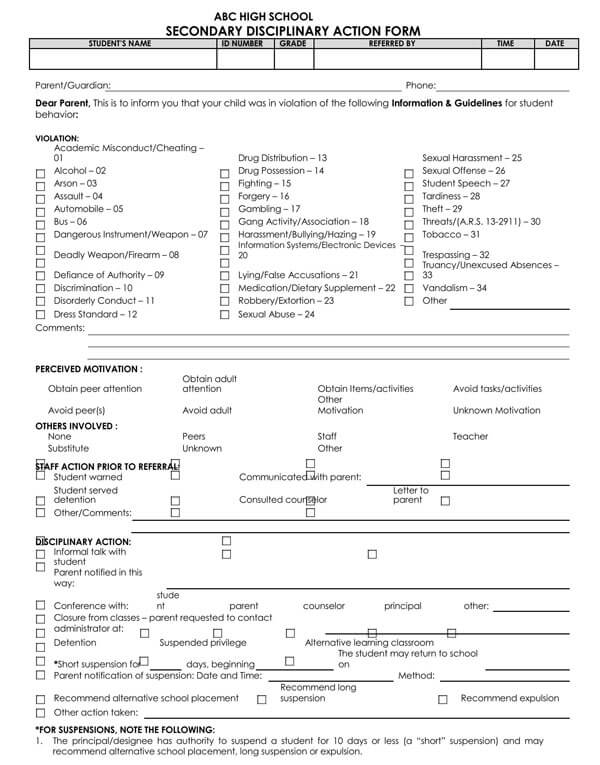Workplace ethics dictate that employees obey the organization’s code of conduct. An employee handbook contains guidelines for interrelationships, discussions, and execution. Ideally, all workers are to respect and uphold the rules. However, situations arise where people violate these regulations. Threats, verbal assaults, and physical confrontations are examples of inappropriate behaviors at work. When this happens, you need to discipline erring people.
Thus, you need to issue an employee disciplinary action form. It informs the affected person of the gravity of his or her offense, and the extent of punishment. Often, getting this document reminds workers of the company’s culture and their expected behaviors.
What is Disciplinary Action ?
It refers to the specific actions an organization takes against its workers for violating the laid-down rules and regulations. Also, it establishes a framework for employees to guide their decisions, talks, and actions. To continuously give their best to the company, there is a need to make the environment comfortable emotionally and physically. It ensures members understand the limits of their rights and respect those of others. Besides, it creates confidence for unity and collaboration among workers. Exceptional employees receive rewards, promotions, and accolades. Based on the severity of the offense, erring workers get reprimands, fines, or demotion.
What is a Disciplinary Action Form?
It is a workplace document that an employer sends to an employee, informing him of the gravity of his offense and the attendant consequences. Whatever the cause, he or she got involved in misconduct that violated company rules. Disregarding values and principles always attract punishment. Moreover, a physical announcement can be tough and emotional. So, an employee disciplinary action form signifies professionalism and seriousness. It contains what he or she needs to do to make amends. Besides, it serves as a piece of credible evidence in a court, should the matter escalate. Moreover, you drop a copy in the worker’s folder to track his or her behaviors over time.
Main Purposes of Disciplinary Action Forms
There are several reasons for issuing an employee disciplinary action form. You need to know where and when such a document is appropriate.
Below are the main purposes enlisted;
Keeping record of behaviors
When a new worker joins your company, you open a file containing his documents. As time goes on, the folders fill up with details of his or her workplace behaviors. Moreover, when an employee violates company rules, you need to update his file with the details. That way, the executives and managers can have a holistic view of an individual’s track record. You should include steps you took to rectify the situation. Also, it keeps the affected person in check.
Creating a management policy
As a manager, you need to be consistent in dealing with errant behaviors. Although cases are different, there should be a universal framework/management policy for dealing with these issues. Keeping a record of the employee disciplinary action form helps to maintain consistency and fairness. Besides, it guarantees that you take the same actions in different scenarios. It also communicates your integrity to follow proper course when occasions demand.
Helping make decisions
The degree of punishment depends on the severity of the offense. If an employee is a first-time offender, he or she might receive a mild warning. However, if the file shows a record of frequent violations, you may demote or fire. Thus, it gives sufficient information to make a better decision.
Free Disciplinary Action Forms
Components of an Employee Disciplinary Action Form
You need to provide comprehensive information concerning the employee and the surrounding circumstances. Further, make it short and precise.
Below is a list of items that an employee disciplinary action form should contain and the order they must be placed in:
Official name and title of the employee: The name and position held by the employee would have to be included in the employee disciplinary action form to show that the correct employee is the recipient of the employee disciplinary action form and that it emanated from the particular person issuing the form.
Date and time of discipline: This entails the date the employee disciplinary form is being issued and time too. It also entails the date and period for the disciplinary action to take effect and that it is carried out to the full.
A comprehensive summary of the situation: It includes dates and times when you observed and issued a verbal warning and corrective measures. If there are witnesses to corroborate your decision, include their names. Adding locations further authenticates your story.
Previous actions of the employee that culminated into these circumstances: This section of the employee disciplinary action form would include actions in the past that may have assisted in the build-up of the current situation. This might include other little acts of insubordination committed by the employee.
Statements from the employee: Statements from the employee about changing, adapting, and improving his attitude. This part of the employee disciplinary action form would be filled by the employee and should contain his/her will to correct their ways and change for the better. This should be included too.
Next steps that the employee must take: Include the proposed steps and time for the employee to correct his ways in this section of the employee disciplinary action form. This should clearly and succinctly state all the steps to be followed and when these would be achieved.
Your verdict as the manager or executive: Write to convict the concerned worker of his wrong acts. Include the mode of disciplinary measure you will employ in this situation and for how long you intend to take the disciplinary action. Your verdict would determine what next would be done to the offender.
Whom does the affected member of a staff report to Include his name in the employee disciplinary action form? It could also be the executive administering the discipline. The superior of the affected staff is to see to it that the punishment is administered to the end.
The individual’s signature that validates the document: He or she must admit they are guilty as charged and show a willingness to improve. The signature of the offended would have to be appended to the document.
Signature of the manager or executive enforcing the discipline needs to append: It shows the person who bears legal and workplace responsibility for the offender and also stipulates that he would see to it that punishment is matted out appropriately.
Types of Disciplinary Action Forms and their Formats
The employee disciplinary action form differs across companies and most times each company has its own method of creating it. There are two major types based on the content and flow of the form and we would be discussing both of them in this section.
Checklist type
This type of employee disciplinary action form lists out the details of the issues in an indented format with boxes to allow the supervisor and employer to check and easily fill it out with the information of the violations and the punishments to be matted out.
They include the information below:
- In your application, select suitable formatting, fonts, and margin. Insert your logo and title at the top.
- Insert space for the affected worker’s name, title, and position. Also, include the name of his supervisor.
- Itemize potential violations and put a square box in front of each.
- Insert space for specific information such as date, time, and location.
- Create space for the statements of the worker and his direct manager.
- Put a portion where the executives can write their verdict concerning the situation.
- Make space for the affected individual and his manager to append their signatures.
A Narrative Type
- Similar to the checklist type, customize the fonts, margin, and formatting to suit your preferences.
- Create sufficient space for the worker’s name, title, unit, manager, and date of offense.
- Put enough space to write the type of offense committed.
- Demarcate the area for location, date, and time.
- Insert boxes for the employee and his manager to write their statements concerning the violation.
- Insert another box titled “Warning Decision.” Insert space for the executive issuing the disciplinary measure to write his details and sign.
- To indicate whether it is the first, second, it last warning, insert a line.
- Create an area where the worker needs to append his signature after reading through and understanding the document.
- Demarcate sufficient space for the worker, direct manager, and the person who issued the document to write their names and sign.
- Duplicate the copy and keep one in the offender’s file.
This type of employee disciplinary action form allows the details of the crime and punishment in a narrative format. The main content of the action and reaction would have already been typed out on the form and spaces are left for the offender and supervisor to input additional details like signatures, dates, etc.
Forms of Misconduct that Require Disciplinary Action
There are various forms of misconduct that would elicit a disciplinary action and they could range from minor to more grievant behaviors or misdemeanors. The most important thing is that the employee would have to keep abreast of all the rules and regulations of the organization and stick to them so as not to err in any way whatsoever.
Some of the misconducts that necessitate disciplinary action are:
- Failure to show up to work: Skipping work without a tenable excuse is definitely an offense in any organization’s rule book. If an employee skips work for a day and do not have a suitable explanation to give, this would definitely elicit disciplinary action.
- Indecent Dressing: Improper use of workwear or putting on indecent clothes to work is an offense in most companies and would definitely attract disciplinary action. So it is right to always wear the proper workwear attire.
- Theft: This without question isn’t allowed in any organization and the disciplinary action associated with it most times is harsh. It is absolutely wrong to steal from your organization or steal from staff in your organization.
- Poor Output and Insubordination: Not hitting your targets for producing very poor outputs will usually elicit warnings and eventually build up to disciplinary action if not checked, Also, insubordination to rules and regulations or supervisors/bosses will also bring about this.
There are a whole lot of misconducts in the workplace that might prompt disciplinary action, but it’s best for employees to know the Do’s and Don’t’s of the company stay on the right lane.
Free Disciplinary Action Form Templates
An employee disciplinary action form is necessary to maintain law and order within the workplace. It keeps members of staff in reverence to the guiding rules of the organization. Besides, issuing this document accentuates the integrity and fairness of the management. Watch out for forms of misconduct such as absence, carelessness, and insubordination to give out this employee disciplinary action form.
There are several employee disciplinary action form templates on our website that you can easily download and customize. They will save you tons of energy and time to create one from scratch. Download on our site now.
Steps to Respond to Disciplinary Actions
Disciplinary acts take various forms, depending on the extent of the offense. A newbie offender would attract a different punishment, compared to a regular person. Moreover, you move through the stages until you oust the affected worker.
Below are steps of responses to disciplinary situations;
Oral correction and discussion
Here is the simplest level of discipline. It involves calling the employee for a meeting where you point out his errors. Meanwhile, it paves the way for discussion and correction. During this period, the executive can ask critical questions and listen carefully to the worker. Also, the concerned individual can explain his position and perspective.
It is a common strategy for fresh offenders. If the unethical behavior has minimal impact on the company culture, you can use this approach. The emphasis is to give warnings verbally, without a document.
Issuing a warning document
This is the second step in enforcing workplace discipline. It is imperative when you observe that there is no adjustment after your conversation with the concerned person. Besides, if the offense is weightier, you need to create an employee disciplinary action form. Ensure you include the warnings and expected changes.
Furthermore, the affected employee must understand and append his or her signature in the document. Thus, it should contain a precise description of events without exaggeration.
A last warning
If there are no improvements still, you should move to this third stage. It probably shows stubbornness and rebellion against company values and principles. When you issue the last warning notice, include a timeframe for visible changes. Failure to adapt within that period leads to dire consequences. If there are no observatory changes, move to the final phase.
Dismissal
The last warning precedes ousting from the organization. If the employee fails to amend his ways until the probation window closes, you have no choice but to release him or her. It is imperative to dismiss such a person before he influences other workers negatively. Also, you may need to set up an inquiry to determine his or her fate.
Tips to Prepare The Disciplinary Action Form
As highlighted above, an employee disciplinary action form contains several segments. You need to be careful when you write one. Besides, each segment varies in complexity and required time.
Follow these guidelines while creating the employee disciplinary action form:
Avoid vague language
Add more details to the story to provide essential context. Instead of writing “he verbally assaulted ..”, spell out the words and actions that explain your point. Rather than tell, show.
Get Narrations from Witnesses
Witnesses provide additional information and evidence to corroborate your points. Their words provide valuable insight into the overall situation. Encourage them to include places, times, and dates for authenticity. Also, maintain confidentiality and respect privacy.
Attach a Time-frame to the Expected Adjustments
Before dismissal, create an avenue for the member of staff to change. Use your employee policy to determine the requisite disciplinary measure. Besides, put a time frame to create a sense of urgency. Emphasize your next line of action if there are no changes.
When to Give an Employee Disciplinary Action Form ?
Many organizations rely on memos to warn or correct members of staff. This blanket method may not be effective. Handling a personalized employee disciplinary action form to an employee when he or she errs will pass a stronger message.
When oral corrections fail, issuing a disciplinary document seems reasonable and imperative. Whether as a first or last warning, it conveys the manager’s mind to the individual. Also, it highlights the disciplinary measures that may follow.
Further, it represents mutual understanding between the affected member of staff and the company. With a copy in his or her file, it is impossible to deny any errant behavior later. This understanding forces workers to comply with company rules and values. Moreover, issue this document immediately you notice contradictory attitudes.
Additional Advantages of Using it
If you notice that your workers are beginning to misbehave, you need to rise to the occasion with an employee disciplinary action form. This helps document properly the act committed and the punishment meted out on the offending person.
It infuses life into company procedures: Members of staff may struggle to see the company’s theoretical policies in action. Consequently, they disobey rules, come late often, and disrespect others. When you serve a few people an employee disciplinary action form, other people take caution.
It promotes equality and unity: Employees are very sensitive to double standards in the workplace. Meting out different disciplinary measures may represent unfairness. However, issuing an employee disciplinary action form places everybody on the same pedestal.
It enhances employer-employee relationships: Warnings encourage workers to adjust their behaviors and become better. Also, it opens a communication channel between workers and managers.
Frequently Asked Questions
Is termination a form of disciplinary action?
Of course, it is the final phase where the company ends an employee’s contract with them.
What constitutes disciplinary action?
It could mean oral reprimands, issuing warning documents, suspension from work, demotion, and dismissal.
Is it considered insubordination if an employee refuses to sign an employee disciplinary action form?
Of course. However, using the right words and precise details will generate lesser resistance from the affected employee.
